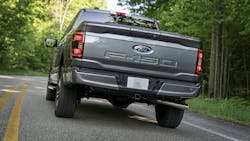Living in a Material World
While energy management is a top-of-mind issue for most design and manufacturing professionals, one overlooked area is making equipment lighter and strong to drive such efficiencies.
A recent Machine Design article talked about the advances in such material use. Because their end products use fuel as direct propulsion, aviation and automotive have led the charge in the use of lighter-weight materials. A McKinsey report cited in that article stated that aviation has about 80% of the lightweight material market share today, while automotive is poised to reach 70% by 2030.
Automobiles have a mix of materials, from steel to carbon fiber to aluminum. Steel’s once-dominant use in automotive has been replaced by, as the article notes, “materials that can reduce weight, improve fuel efficiency, provide better performance, lower tooling costs and lower environmental costs.”
Yet it is not carbon fiber or additive manufacturing that is driving the change in vehicles. “Aluminum, viewed as the fastest growing automotive material, is expected to grow to 514 pounds per vehicle by 2026, a growth of 12% from 2020 levels, according to a DuckerFrontier survey cited in the article.
When Ford switched its F-150 to an aluminum body in 2015, engineers decreased the use of high-strength steel in the frame to 77% from 23%, which resulted in a stronger, more durable and structurally more rigid structure while saving up to 60 lb. of vehicle weight.
Carbon Fiber Takes Another Turn
Shifting focus to another material challenge, the use of fiberglass blades for wind turbines is far more cost-effective than the carbon-fiber alternative. Machine Design recently reported on an innovative and lower-cost carbon fiber option that could provide greater material strength and lower cost than the fiberglass alternative.
Researchers found “the new fiber material had 56% more compressive strength per dollar than commercially available carbon fiber, the industry baseline. Typically, manufacturers compensate for lower compressive strength by using more material, which increases costs and the weight of the blade. The team estimates that the new material would cut about 40% from the material costs for a spar cap compared to commercial carbon fibers.”
Expanding this from a scholarly exercise to a commercially viable one is another issue. As the article notes, “the wind and carbon fiber industries do not currently overlap. The wind industry designs wind turbine blades using only commercially available materials, and the carbon fiber manufacturers face a hurdle to innovation due to high capital costs associated with introducing a new production line for the wind industry.”
About the Author

Bob Vavra
Editor Emeritus, Machine Design and Power & Motion
Bob Vavra is the former senior content director of Machine Design and Power & Motion.
